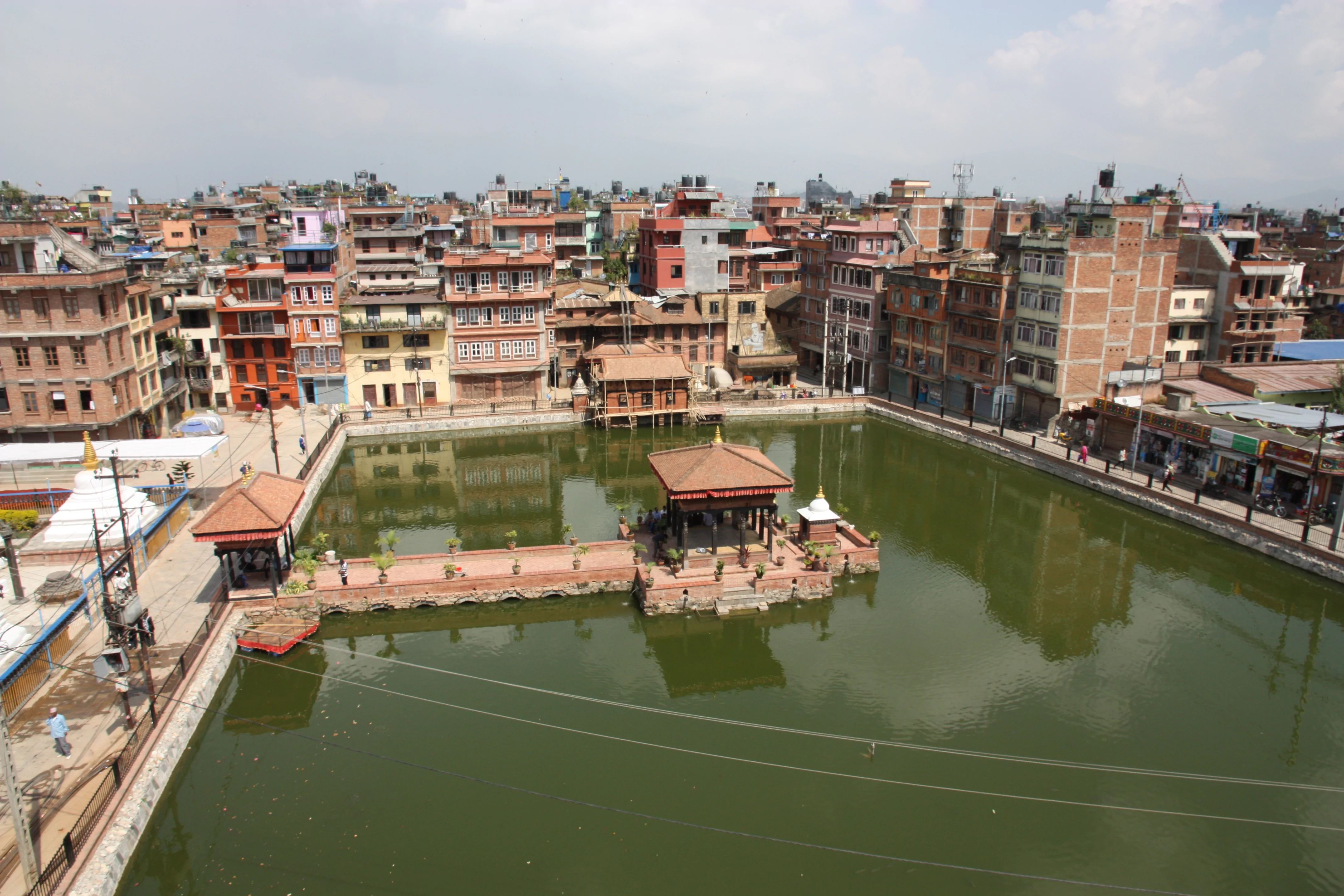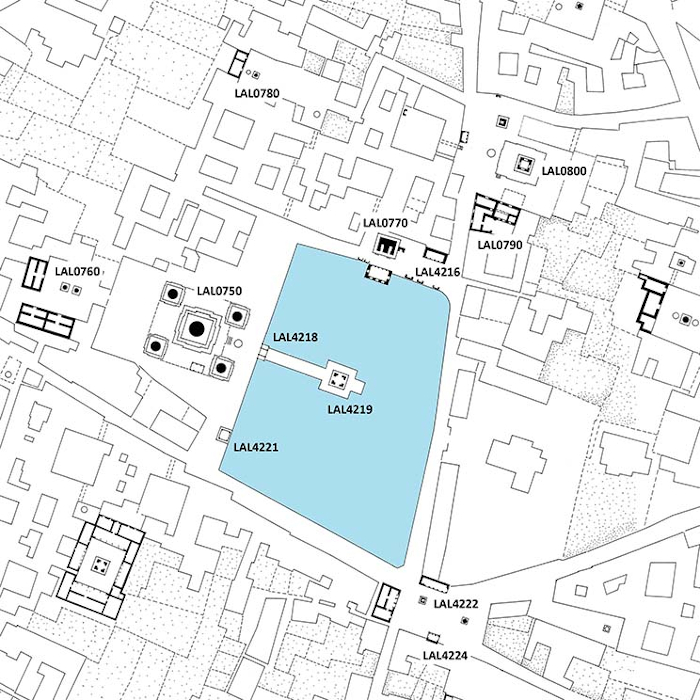Pimbahal

Like Cyāsal, Pimbahal has a vibrant political and cultural history and life that also manifests in its larger ensemble of monuments, and intangible heritage, and turns it into one of the relevant monument zones we have defined (please note that by doing so, we do not follow official and administrative boundaries!). Pimbahal is a unique part of Patan’s urban heritage and dynamic life, with a high condensation of sites used for social, religious, economic and cultural purposes. For this case study on DANAM, we have documented 12 phalcās and six other heritage monuments, ranging from monastic compound to shrine and temple
Similar to the Cyāsal case, too, Pimbahal’s built heritage was also affected by the Gorkha earthquakes of 2015. Both use their open spaces, one of the few larger ones in the otherwise condensed network of Old Patan, intensively. Pimbahal area and sites were quickly regenerated and got a ‘facelift’ that has pushed the open space around the famous pond into a popular site for both local residents and other visitors. As in the case of Cyāsal, Pimbahal locality is made up of various castes: Śreṣṭhas, Rājopādhyāyas (Newark Brahmins), Maharjanas (farmers), Śākyas, , Kapālīs (Newar musicians and caretaker of the temples) and Bhāratīs (Daśanāmī Sanyāsīs), for instance. The associations related to the area have started to revitalize some of their ritual and other cultural practices. Pimbahal and Cyāsal share their open squares and engaged socio-cultural activities as well as historic Cila͂ (possibly Ashokan, 250 BCE) Caitya. There is also a three storied medieval pagoda temple of Caṇḍeśvarī towards the northern side of the pond, the lineage deity of Pātravaṃśa Śreṣṭhas of this area. Another strong association, the to Digvijaya's Lākhe clan, is to the Lākhe (lit. 'demon'), and some representatives of the Pātravaṃśa Śreṣṭha clan promite this association, also through rejuvenation of related rituals in this particular vicinity. The pond is believed to have been made by Lākhes (either clan members or the premodern figure of the Lākhe demon), following the order of Gayo Brahman/Bāje1. All four sub-clans claim that they once migrated from Banepa, a small historical town located to east of the Kathmandu Valley. Each clan also celebrates annual linage deity worship once a year jointly and separately as well in the temple of Caṇḍeśvarī. The social topography around the pond contains many legends related to the famous tantric Gayo Bāje and the lineage goddess Caṇḍeśvarī. During the annual festival of Indrajātrā, figures of Yamadyaḥ (Indra) are displayed in many phalcās and samay-baji (ritual food with 5 kinds of edible things like beaten rice, buffalo meat, vegetable etc.) is distributed as prasāda by the donor or guṭhīyāra family of the sites. One also finds worship of other deities, gurus and ancestors in several phalcās, edcative, social and religious activities. Local and municipality organisations have actively engaged in post-earthquake reconstruction of damaged sites around Pimbahal, Chāybahal and Sulima areas. The Jagamadu Pukhu Kṣetra Vikāsa Samiti (Jagamadu Pond Area Development Committee), in collaboration with Lalitpur Metropolitan office and World Bank, implemented the Pimbahal Pond Repair Project (almost 6 lakh Rs.), a Project for Stone Paving around the Pond area (almost 6 lakh Rs.) and a Rainwater Harvesting Project (almost 5 lakh Rs.) in 2017.

Links to individual monuments
